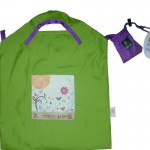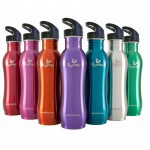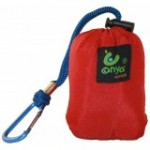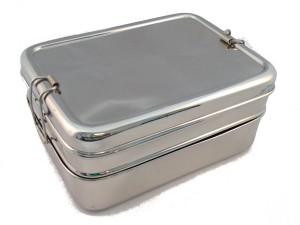A Wasteless Pantry is an investment in a better future, as anything of worth would be.
You exercise and eat well as an investment in your health. You might sign up for a mortgage as an investment in future financial security. In much the same way transitioning to a wasteless pantry or lifestyle is an investment in the future. You invest time and money getting organized and setting up with reusables but unlike exercise and healthy eating if you stop using your reusable for a couple of weeks you can pick up exactly where you left off once you get back into it – your health probably isn’t so forgiving!
In fashion there is this concept about cost per wear. If we applied this to your quality reusable the initial outlay might look like this:
Reusable bag (like an Onya Original Shopping Bag)
$12.50 initial cost
Used once per week for the next 10 years = 2 cents per use + no waste
Vs
Supermarket ‘green bag’
$2 to $5 initial cost
Used once per week for the next 10 years = 2 cents per use + 3 bags being sent to landfill over that time (I’m being generous here as mine have never lasted more than a two years)
OR

Produce Bags (like our cloth bags or Onya mesh ones)
$3 initial cost each
Used once per week for the next 10 years (I’m being conservative here as one customer has been using theirs for 20 years) = less than 1 cent per use + no waste
Vs
Plastic bags
1 cent each initial cost (incorporated into the cost of your goods)
Used once each for one purchase per week over the next 10 years = 1 cent per use + 520 plastic bags being sent to landfill
OR
Reusable drink bottle (like an H2Onya)

$18.95 to $25.95 initial cost plus free water from a tap
Filled once per day for the next 5 years (I know they last longer but this is going to be ridiculous) = 7 to 10 cents per use + no waste
Vs
Bottled water (I’ll pick the cheapest brand at a supermarket for comparison)
70 cents initial cost
One bottle per day for the next 5 years = 70 cents per use ($182 over that time!) + 260 bottles being wasted
I think you can see where I’m going with this – reusables win every time!! This goes for hankies vs tissues, lunchboxes/wraps vs clingwrap, JuJu cups vs tampons, cloth nappies vs disposable nappies, fresh loose coffee & tea including the plunger vs coffee pods or instant or teabags. Every time reusable wins for the environment but also for your pocket!
There is a lot of confusion as to the impact that these things make. Consider this:
Every water bottle used requires 3 litres of water to produce 1 litre of bottled water and it takes 3.4 megajoules of energy!! And that’s just to manufacture.
More energy is needed to fill the bottles with water at the factory, move it by truck, train, ship, or air freight to the user, cool it in grocery stores or home refrigerators, and recover, recycle, or throw away the empty bottles.
The Pacific Institute estimates that the total amount of energy embedded in our use of bottled water can be as high as the equivalent of filling a plastic bottle one quarter full with oil. http://pacinst.org/publication/bottled-water-and-energy-a-fact-sheet/
Once in landfill where a majority of bottles go, it takes up valuable space, is a source of toxic pollution for more than a lifetime and represents more lost resources in a world that has little left to spare. If it does manage to get recycled it can only be downcycled (that is to say that it will never be made into a water bottle again) and will eventually be added to landfill too.











Appreciate your efforts to compare all the things so that there is a solid ground to start with. Definitely going zero waste is a step closer to a healthier society and environment! The supermarket bag is one of my fave!